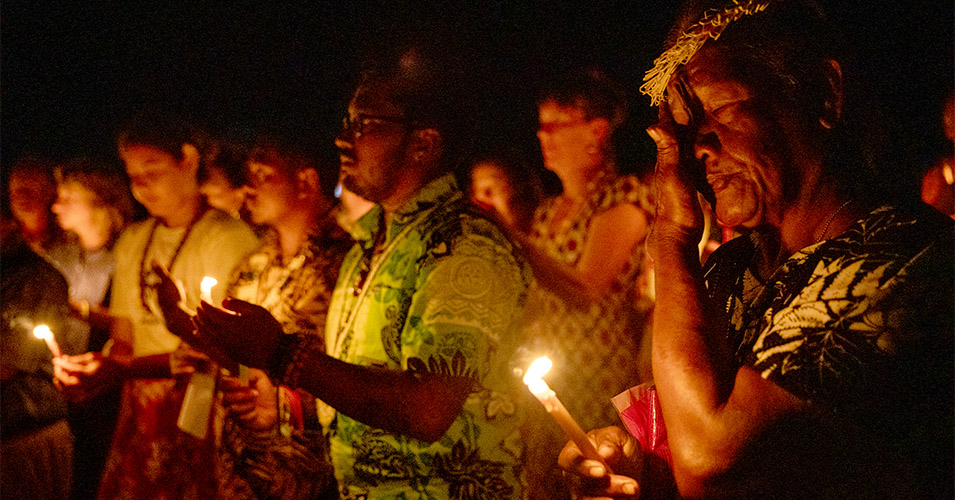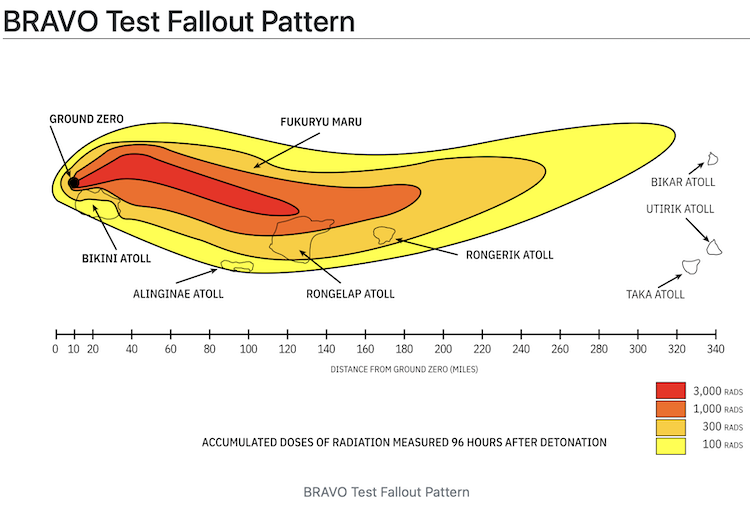
Forty years ago, in 1985, the people of Rongelap Atoll in the central Pacific were forced to evacuate their radioactive home after enduring years of health impacts from the years US nuclear weapons tests in the Marshall Islands. Yesterday, the community came together in Mejatto to remember the displacement.
The event saw the Rongelap community coming together to light candles and singing songs in Mejatto, Marshall Islands.
The United States conducted 67 nuclear tests in the Marshall Islands between 1946 and 1958, primarily at Bikini and Enewetak Atolls, resulting in forced relocation of residents and lasting environmental and health consequences.
Cathy Joel, one of the few remaining survivors of the 1954 Castle Bravo bomb – the US government’s largest ever nuclear weapons test – still recalls the terrors of that night.
“I was six years old when the bomb exploded and I was so afraid. My father tried to comfort me but I was so frightened he couldn’t calm me down. The explosion was so bright there many colors, it frightened me as I had not seen them before” she said.
"Three of us women are here [in Mejatto] and I was afforded the opportunity to speak on behalf of these survivors. I’d like to encourage all of you when looking at us, see us as a remembrance of what happened in 1954 when the bomb exploded. We encourage you to continue to stand together, be strong and live in harmony - that is our wish."
Due to nuclear fallout from Castle Bravo, Rongelap’s entire population of 350 people was later relocated to Mejatto in 1985, with help from a Green Peace ship, the Rainbow Warrior.
In May 1985, over 10 days and taking three trips, the residents collectively dismantled their homes bringing everything with them, including livestock, and 100 metric tons of building material.
Four decades later, the surviving Rongelap community is now spread across the Marshall Islands. Many travelled back to Mejatto for the commemoration, including those who were children during the evacuation, and prominent members of the Marshallese government.
Bunny McDiarmid, crew member during the 1985 Rainbow Warrior evacuation, said that the people of Rongelap stood up to the United States when they refused to take proper accountability and responsibility for the damage it had done.
“After undergoing years of health impacts from exposure to radiation, Greenpeace answered a call to help evacuate them from their once rich, but now contaminated home island.”
“We continue to stand with the Marshallese community - as we do with other communities that suffer displacement and colonial exploitation - in their fight for justice for the nuclear weapons legacy, and for the threats they are already feeling from climate change.”
Mr. McDiarmid was also the former Co-Executive Director of Greenpeace International from 2016 to 2019.
The Rainbow Warrior is in the Marshall Islands as part of a six-week mission across the country with a team of nuclear specialists onboard conducting independent research to support the government in its ongoing fight for nuclear justice and compensation; and to reaffirm its solidarity with the Marshallese people.
Background

Diagram from https://www.atomicarchive.com/media/maps/bravo-fallout.html
Path of nuclear fallout plume after U.S. nuclear weapons test Bravo (yield 15 Mt) on Bikini Atoll. It is the single worst contamination accident in U.S. nuclear history. The test was part of the Operation Castle. The Bravo event was an experimental thermonuclear device surface event.



